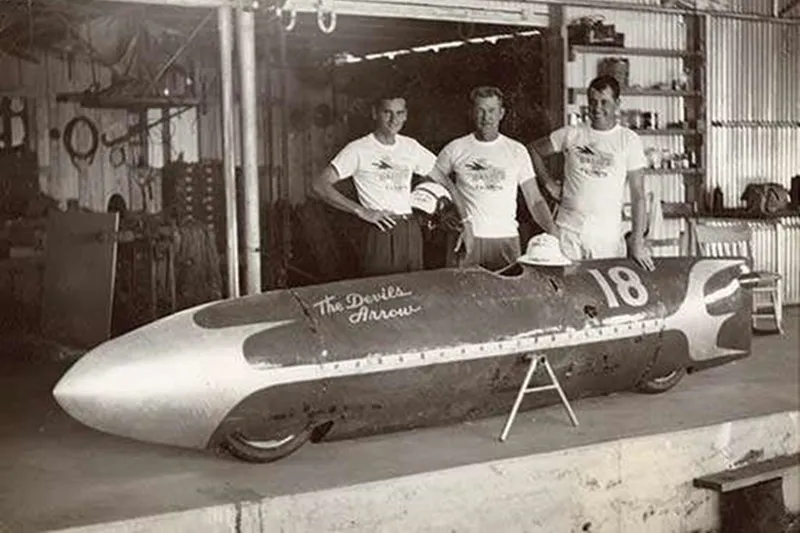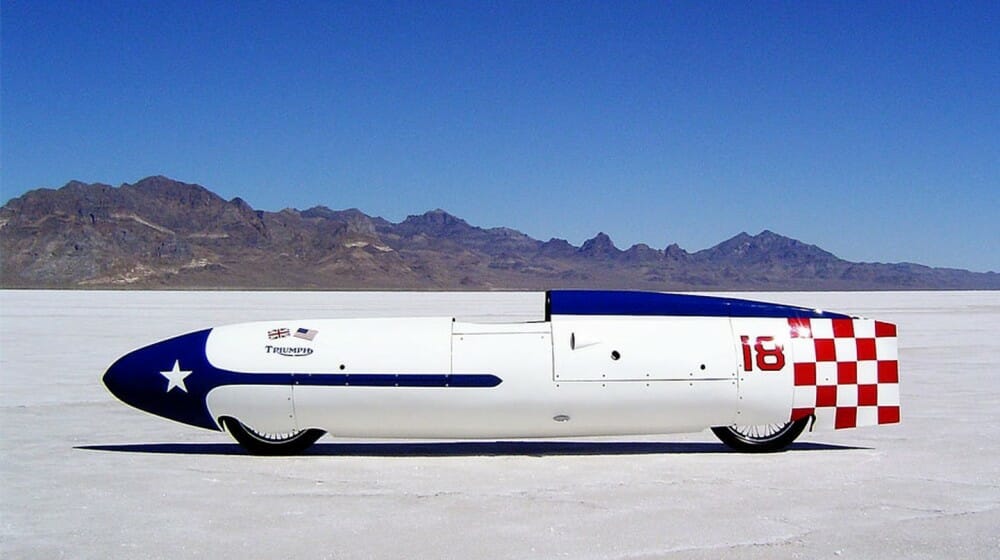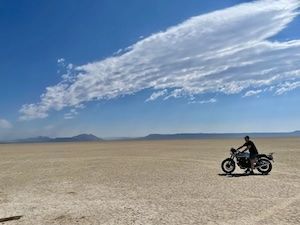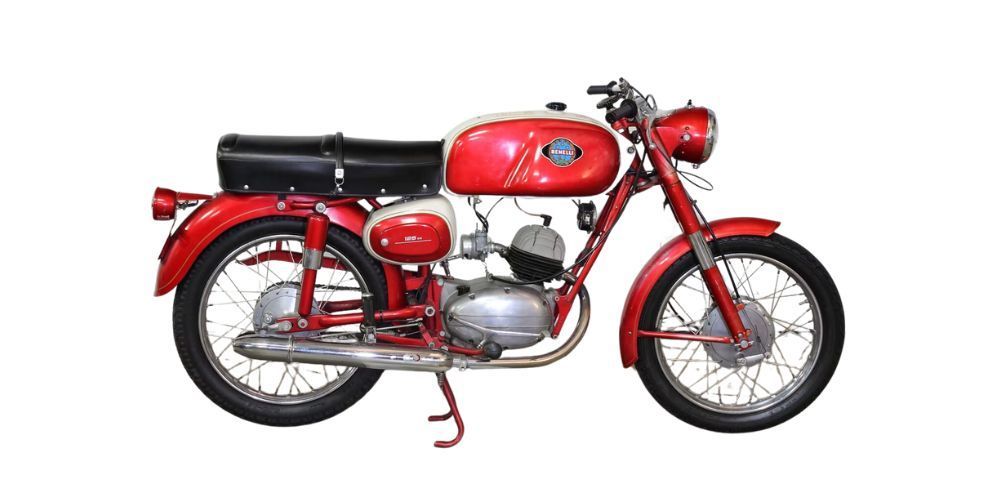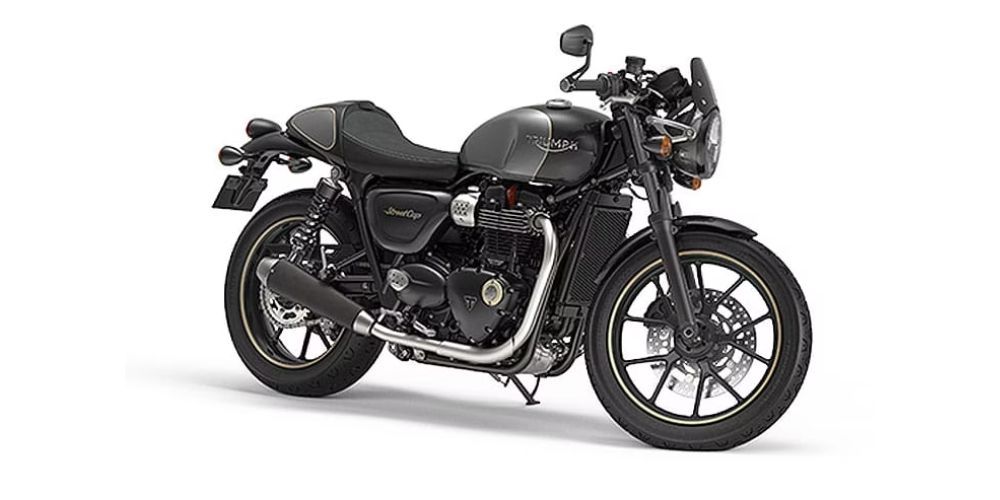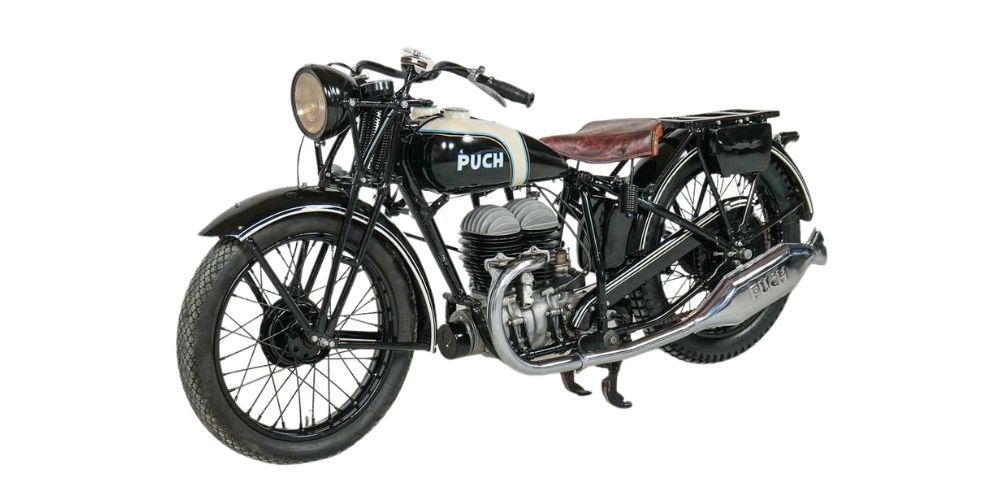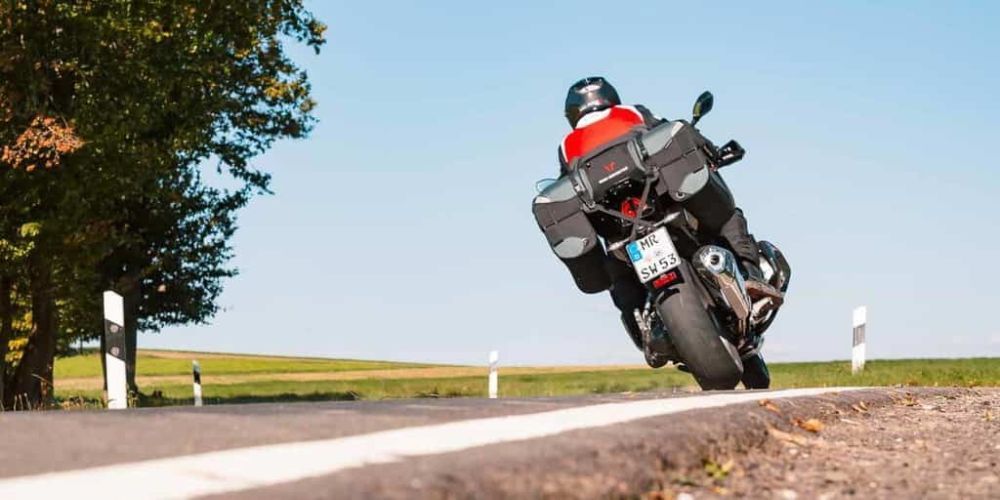Triumph Bonneville History by Decade
The History of the Bonneville - Origin to Today
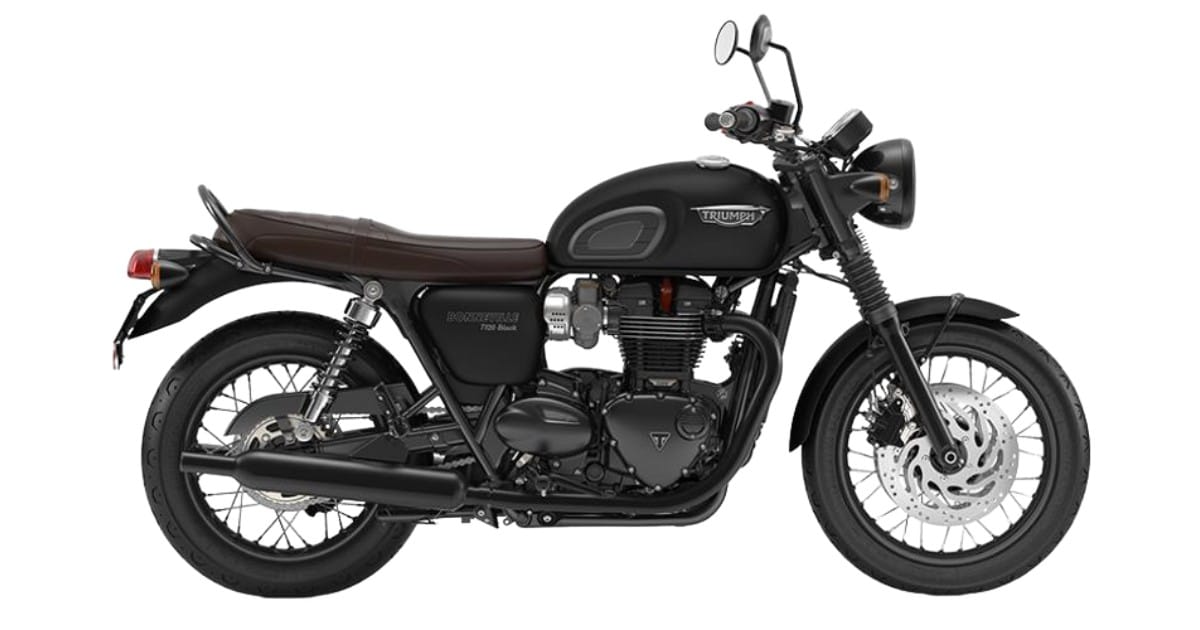
The Bonneville Origin Story
The Bonneville traces its roots back to 1956 when John Allen set a world speed record of 214.40 mph at the Bonneville Salt Flats in Utah riding on a Triumph-engined streamliner.
To honor Allen's efforts, Triumph Motorcycles introduced the Bonneville (named after the Bonneville Salt Flats) in 1958. The model was based on their successful T110 Tiger featuring a 650 cc pre-unit parallel twin-engine—designed by Triumph's chief designer Edward Turner.
The Bonneville was an instant success and became one of the most iconic motorcycles ever made. By the end of the 1960s, Triumph had dominated US bike sales in the over-500cc class: by then, it had taken more than 50% of this lucrative market.
However, with the Japanese motorcycle industry growing rapidly, it was difficult for Triumph and its parent company BSA to stay ahead of the competition. Despite a redesign of the Bonneville in 1970, sales continued to fall—particularly once riders started comparing it with Japanese brands, which were better in performance and reliability.
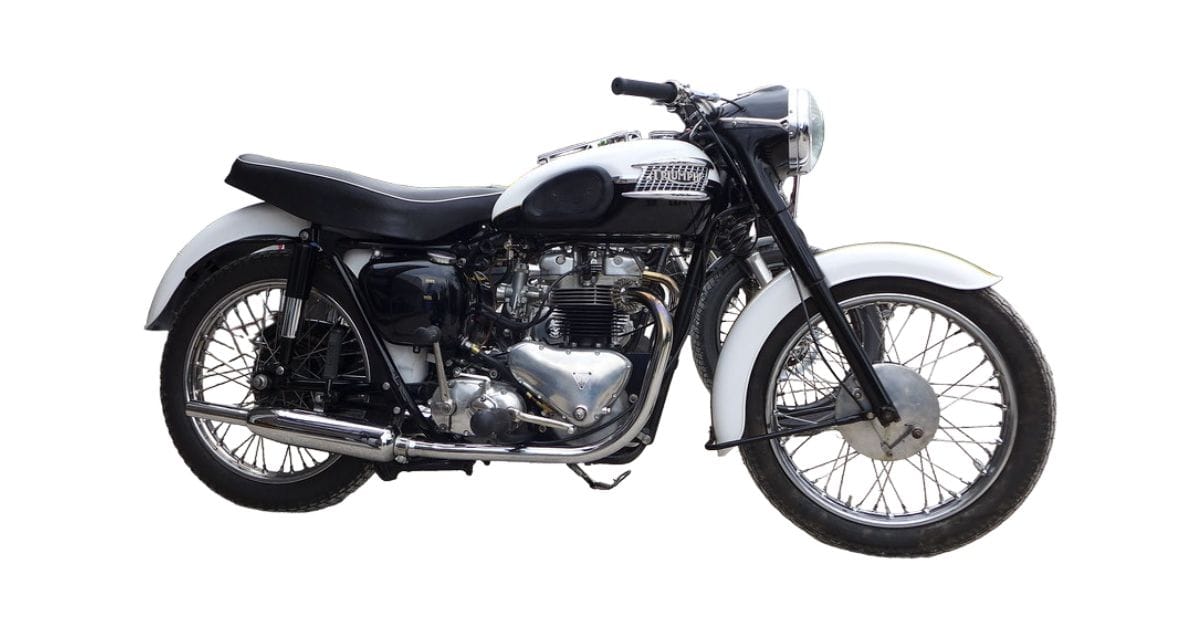
In 1972, the BSA group of companies (including Triumph) was acquired by Manganese Bronze Holdings Ltd. and its subsidiary Norton Villiers to form Norton Villiers Triumph (NVT).
In 1973, Triumph responded to the need for a more powerful model by releasing the Bonneville T140. Although at 744cc and 49hp, it was slightly more powerful than its predecessor (the 650 T120 model)—the new bike didn't offer enough performance to challenge other high-end bikes such as the Kawasaki 900 Z1 and Honda CB750.
In 1983, the last year of production at its Meriden plant, Triumph went into receivership. Despite this setback, there was still hope for the Triumph Bonneville.
John Bloor later acquired Triumph Motorcycles and licensed Racing Spares—a small Devon-based company run by Les Harris—to manufacture the T140 Bonneville between 1985 and 1988.
More than a decade later—in 2000—building on its past success, Triumph Motorcycles (UK) launched a new Bonneville as part of its resurgence under the leadership of John Bloor at their new Hinckley plant.
The model came equipped with a 790cc parallel twin power plant and combined modern manufacturing techniques with classic styling. This ushered in a new era of the Modern Classics Range.
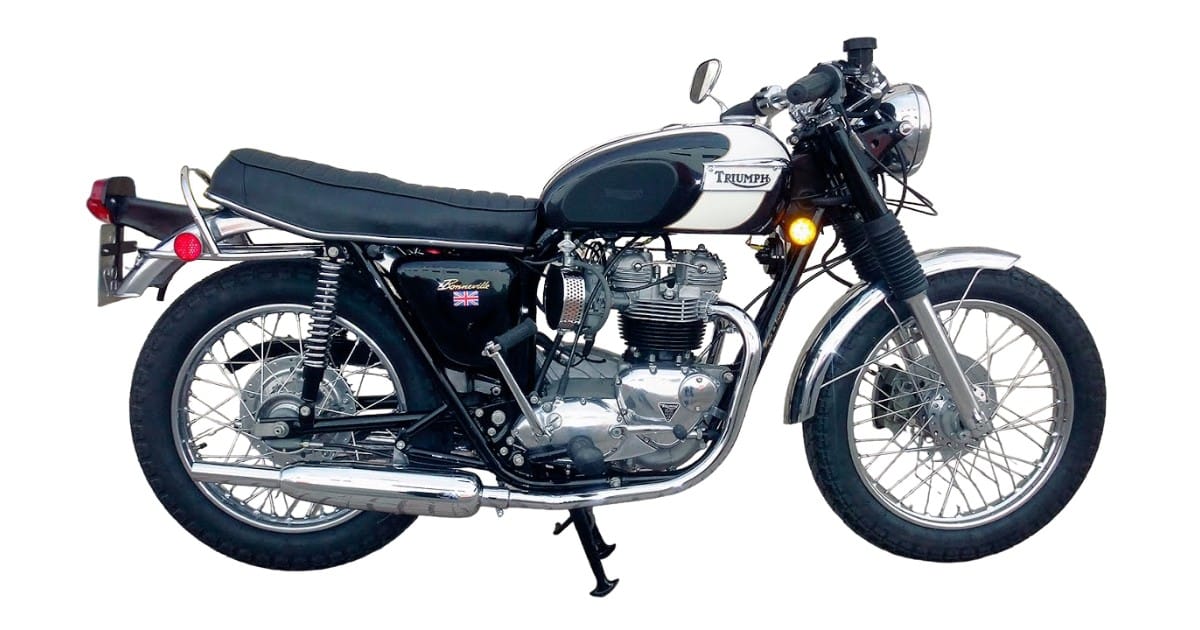
The People That Made It Happen
In the 1950s, a Texan team set off for the Bonneville Salt Flats in Utah—where they proceeded to set two land speed records. A 193 mph world record on a 650 cc Triumph powered streamliner called 'the Devil's Arrow' in 1955 and an unofficial 214.40 mph land speed record on the streamliner, 'the Texas Ceegar' in 1956.
The team comprised Veteran AMA racer Johnny Allen, service manager Jack Wilson (who worked for Dalio's Triumph in Ft. Worth), and airline pilot Stormy Mangham.
Their performance which also gave them the title of 'World's fastest Motorcycle'—motivated Triumph to name one of its new models after the effort.
Therefore in 1958, Triumph's chief designer Edward Turner introduced the T120 Bonneville 650 (named after the Bonneville Salt Flats) at the Earls Court Bike Show, which went on sale in 1959. Destined to be the best-selling British twin ever made, the Bonneville would become an icon among motorcycle aficionados.
The Triumph Bonneville by the Decade
The Triumph Bonneville has undergone many changes over its lifespan but has remained a prominent model with its unique styling. Here is an overview of how the Bonnie has evolved throughout the years.
1960's
-
The Bonneville T120List Item 1
In 1958, the legendary motorcycle designer Edward Turner's final design for Triumph turned out to be his masterpiece: the Bonneville T120. Its combination of power and finesse was unmatched by any other British classic motorcycle.
Named after Triumph's record-breaking 214 mph run, it spawned a generation of teenage cafe racers and helped to establish its legendary reputation among motorcycling fans.
For the four years that it was produced, the T120 remained relatively unchanged. In 1963, however, as part of continued upgrades and engineering improvements, Triumph introduced an updated version of the Bonnie.
The new Bonnie sported unit construction, meaning that the engine and transmission were combined into a single component. This helped create a more compact design—making it stiffer than its predecessor. Triumph also reinforced areas such as the swingarm and headstock, recognizing the need for additional bracing.
Through the years, Triumph made small but noticeable changes to the motorcycle—improved front forks and a slightly altered headstock angle gave it sharper steering; and a sportier feel. The T120's last major upgrade occurred when Triumph began producing models with an oil-in-frame design instead of a separate tank.
One notable performance of this model was in 1967 when Evel Knievel made one of his most famous stunts by jumping over the Caesar's Palace fountains on a Bonneville T120 TT special.
-
The ThruxtonList Item 2
The Thruxton story began in 1958 when a prototype Bonneville won the grueling Thruxton 500 race series by dominating its competition with legendary British racer Mike Hailwood at the helm. From then on, the T120 engine gained a reputation for excellent performance and was dubbed the 'Thruxton'.
The name stuck and went on to define the winning Triumph production racers of the 60s and 70s at the TT and US AMA. Later, teenage cafe-racing enthusiasts adopted it in homage, modifying their own T120 motorcycles with high-performance parts but retaining a classic look.
In 1969, yet another racing success on this Bonnie was achieved when Malcolm Uphill set a new production motorcycle speed record at the Isle of Man TT by riding his Bonneville motorbike at more than 100mph.
1970's
In the early 1970s, Triumph realized that Japanese manufacturers were developing faster and more reliable motorcycles. The 650cc Bonnie was no longer competitive in either category—leading to the development of the Bonneville T140.
List of Services
-
T140V & T140RVList Item 1
The T140V was the newest model in Triumph's lineup in 1973, with 'V' standing for five because it had a 5-speed transmission. The early versions of this bike shared much of the T120s components—including cable-operated drum brakes—but they eventually gained disc brakes and an engine size increase from 724 to 744cc.
The 1975 RV was a version of the V sold in export markets, and Triumph simply redesigned the engine to switch the gear from right to left.
-
T140J Silver Jubilee
To celebrate Queen Elizabeth II's 25th anniversary on the throne (1977), Triumph created an elegant commemorative edition of its Bonneville model.
The T140J was a typical Bonneville but with patriotic pinstripes: red, white, and blue on a silver base. Colored panels were attached to the wheels, bright engine covers added, and the seats had a unique blue color.
-
T140E
The T140E was the model updated in 1978 to comply with emissions standards. It featured a redesigned cylinder head and Amal carbs and later incorporated Lucas electronic ignition.
The mechanical innovations continued with the addition of new Lucas switchgear, redesigned side panels, and passenger grab rails with a small parcel rack.
-
T140D 1979
The 1979 T140D was designed specifically for the American market, and its styling was based on Yamaha's XS650 twin. It had a black paint job with gold pinstriping, a custom two-into-one exhaust, and seven-spoke Lester magnesium alloy wheels.
1980's
-
T140AVList Item 1
For the 1981 AV "Anti-Vibration" models, they fitted rubber anti-vibe bushings while also revising the balancing of crankshafts on that line.
Despite their simplicity, the solution proved effective, and police officers initially embraced this new method.
-
T140LEList Item 2
To commemorate Lady Diana Spencer's marriage to Prince Charles in 1981, Triumph rolled out 250 of their T140 LE models. Like the Jubilee model before it, this make had a regular Bonnie body style with extra shiny paintwork.
-
T140W TSSList Item 3
The TSS represented a fresh approach for Triumph, and the bike was unlike anything else in its lineup.
The "W" on the new TSS's (Eight-valve) cylinder head indicated a Weslake-based design.
The revised crankshaft design helped to reduce vibration, electric starting was added, a new 4-gallon tank replaced the former unit, and twin front brake discs were installed. Marzocchi rear dampers and alloy wheels also meant better performance for riders.
-
Harris T140List Item 4
After the Meriden plant closed, the Bonneville models were built by Les Harris' Racing Spares—a small Devon-based company that obtained a license from John Bloor. The new versions of these bikes made between 1985 to 1988 featured significantly more Italian and German parts than earlier incarnations.
2000 to Today
Since the return of the Triumph Bonneville in 2000, the new bike has appealed to both younger and older riders with its classic styling, outstanding handling, and impressive functionality.
The
Modern Classics Range comprises different models, each with its distinct personality. The bikes represent Triumph's commitment to the classic style and design of the original Bonneville—but with modern technology and performance upgrades that make them everything you want in a motorcycle.
List of Services
-
Bonneville T100 & Bonneville T100 BlackList Item 1
The iconic Bonneville name was reintroduced by Triumph in 2002 with the launch of its retro-styled T100 model. The easy-handling design, acclaimed for its stylish looks and versatility, quickly became a favorite among riders and played an important role in shaping today's modern custom scene.
In 2002, the engine size began at 790cc and was later upgraded to an 865cc with a 360-degree crank. The latest 900cc twin engine debuted in 2006 with a distinctive British engine tone. Its low-end torque and mid-range power made it an ideal engine for urban riding or twisty roads.
The T100 was also the first Bonneville to feature fuel injection and liquid cooling, bringing a period of classic carb-powered engines to an end.
In 2017, the 900cc Bonneville T100 and T100 Black were completely redesigned to incorporate a variety of advanced technology features and new chassis components for confident handling. These new features made them the most advanced and accessible versions of the classic Bonneville bike ever made.
-
Bonneville T120 & Bonneville T120 BlackList Item 2
The Bonneville T100, released in 2006, set the stage for Triumph to rejoin the market in 2016 with a new high-power 1200cc engine.
The new Bonneville T120 was a stunning, powerful machine that paid homage to its legendary 1958 forefather. The impressive detailing—from brushed steel and chrome touches—made it an eye-catching ride.
This Bonneville exemplifies the classic qualities that have made Triumph motorcycles legendary: craftsmanship, performance, and reliability.
-
Thruxton & Thruxton RList Item 3
The modern Thruxton and Thruxton R, reintroduced in 2004 and after a major update in 2015, preserve the legend of their namesake while offering thrilling high-power performance.
As the modern reincarnations of the legendary Triumph cafe racer line—they deliver thrilling 1200cc performance, paired with a dynamic chassis and impeccable suspension tuning to handle even the most aggressive summer roads.
The Thruxton is a true icon of British bike culture, and today it remains at the heart of Triumph's heritage. With its powerful engine, Showa Big piston forks, and an Öhlins rear suspension—not to mention Brembo discs—this stunning café racer shows that tradition never goes out of style.
-
Bonneville Bobber & Bobber BlackList Item 4
When the Bonneville Bobber debuted in 2016, it was one of the most anticipated launches in Triumph's motorcycling history, becoming the fastest-selling Triumph bike.
The Bonneville Bobber traces its roots back over 60 years to a time when riders stripped down their motorcycles to the bare essentials and bobbed the rear fenders for maximum speed. Triumph's bikes—known for their performance at that time—were often chosen by U.S.-based aficionados.
The new Bobber lineup from Triumph brings its iconic bikes to a whole new level with thrilling performance, beautiful engineering innovation, and custom minimalism.
A new generation of customizers is once again embracing the Triumph Bonneville as a platform for building beautiful, stripped-down bobbers. The result: the award-winning engineering masterpiece that is the Bonneville Bobber.
Thanks to a wide range of custom accessories, kits, and support from dealers worldwide, there is no limit to what you can do with your bike.
-
Bonneville Speedmaster
The Speedmaster story begins with Triumph's classic cruisers, which have been delivering British character and style on two wheels since the 1950s.
The 2018 Bonneville Speedmaster blends classic design elements with the level of performance and quality craftsmanship characteristic of newer models.
The first Speedmaster was launched in 2002, featuring a twin-engine cylinder design and paid homage to the classic Triumph American spec customs of the 1950s and 1960s. Initially a 790cc engine, it was upgraded to a larger 865cc model in 2005 and introduced fuel injection in 2008.
Today, the modern Bonneville Speedmaster marries the laid-back attitude of a cruiser with agile handling and spirited performance.
-
Street Scrambler
Triumph is widely considered to have made the most iconic Scrambler of its kind. Two icons from the 1960s evoked its legacy: Steve McQueen, who famously rode one in the film 'The Great Escape'; and Evel Knievel—whose T120TT jumped Caesars Palace fountains.
In 2006 Triumph reintroduced the Scrambler to capture a new generation of riders. It later performed a significant redesign in 2015 with the launch of its Street Scrambler variant. The bike has since become associated with retro-style customizing and is now seen as an icon among motorcycle enthusiasts.
The Scrambler has also become a recognizable cultural icon, appearing in blockbuster films like Jurassic World and Doctor Who.
-
Street Twin
The Street Twin was introduced in 2016, providing the classic look of a traditional British bike with an engine suited for all skill levels.
The Street Twin is powered by Triumph's 900cc engine, which gives it an engaging character thanks to its 270-degree firing order and ample low-end torque. It also comes with the classic design and excellent finish expected from the British marque, making it a sensible choice—no matter your style or skill level!
From 2023, Triumph will rebrand its Street Twin motorcycle as the Speed Twin 900. Featuring thrilling performance and confidence-inspiring handling, it now offers even more comfort and style.
-
Street Cup
The Street Cup is a stripped-down, minimalistic iteration of the innovative design of Triumph's renowned Street Twin motorcycle.
With features such as an authentic bullet seat, dropped 'Ace' bars, dedicated rear suspension, and a removable café racer seat cowl, this bike provides the real-world experience of smooth riding and agile handling.
The high-torque 900cc Bonneville engine is well suited to any adventure, whether it's zooming around town or exploring the backroads. A raw, rich soundtrack from its shorter twin upswept silencers that only a true classic can provide accompanies you wherever your journey may lead.
Learn about the history of Triumph, the Triumph logo, or shop for some Triumph gear.
About the Author
William Flaiz, passionate about European motorcycle brands, shares his expertise and stories on RunMotorun.com. He offers detailed insights and reviews, aiming to educate both seasoned enthusiasts and newcomers. Flaiz combines personal experience with thorough research, welcoming visitors to explore the rich world of European motorcycles alongside him.

